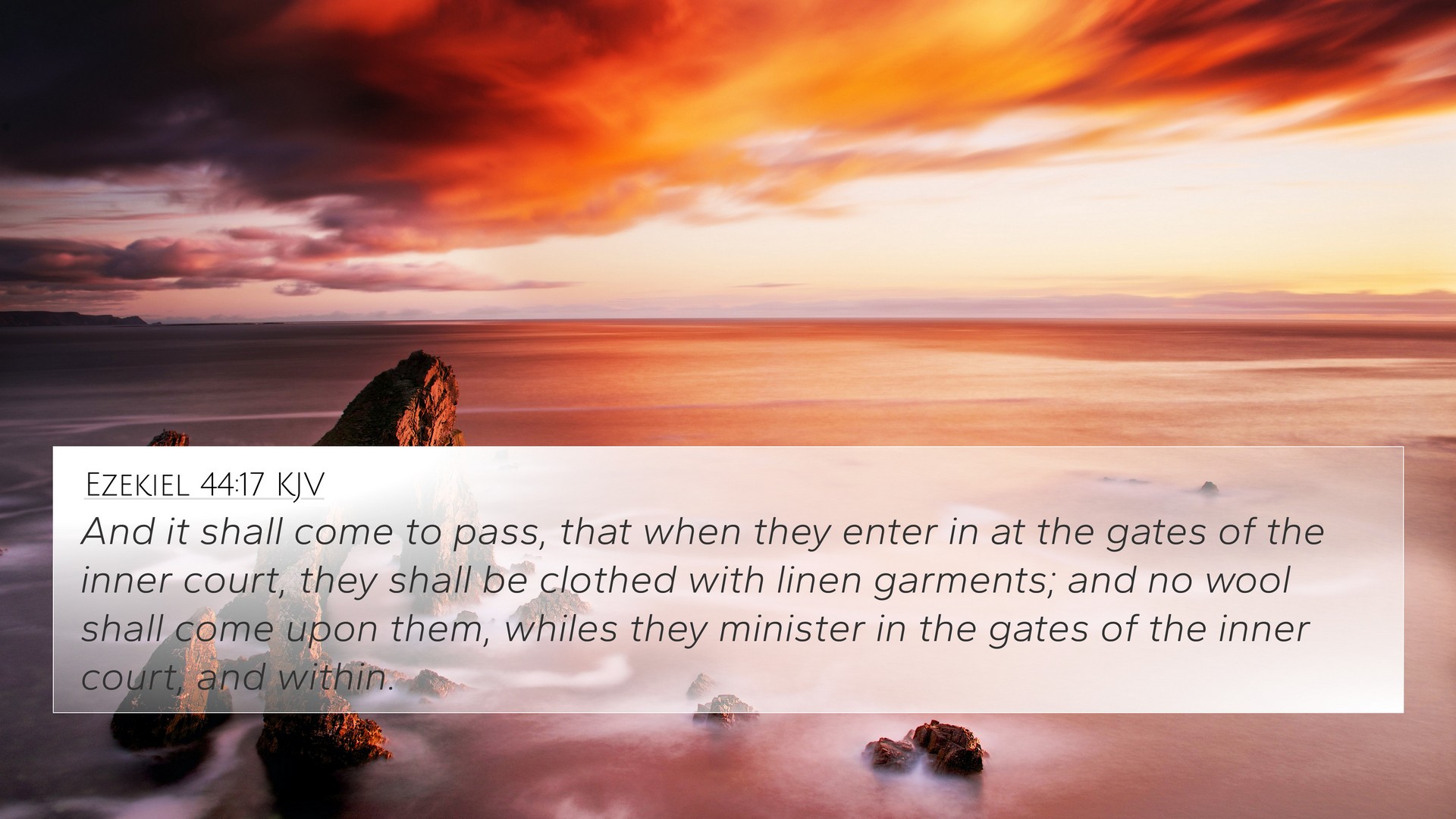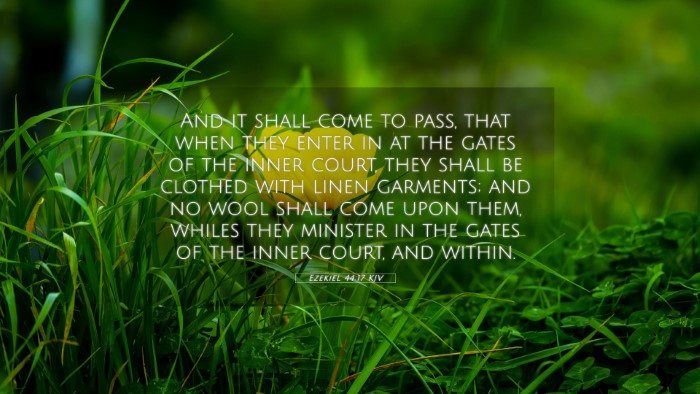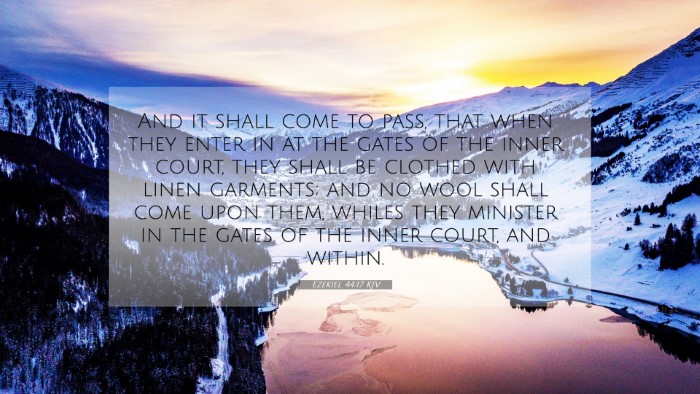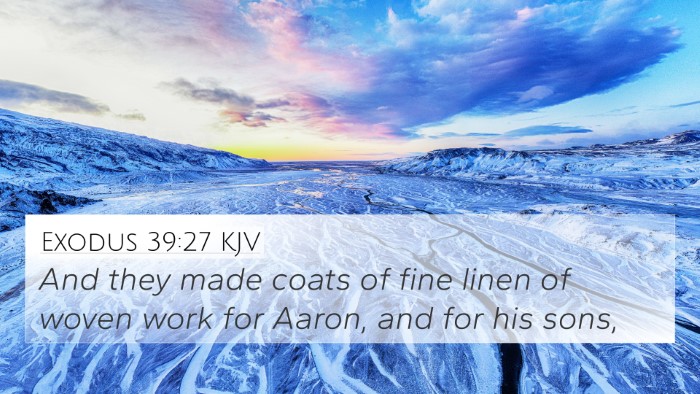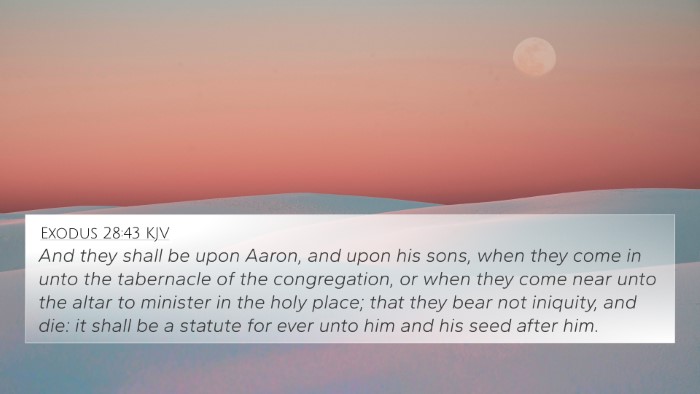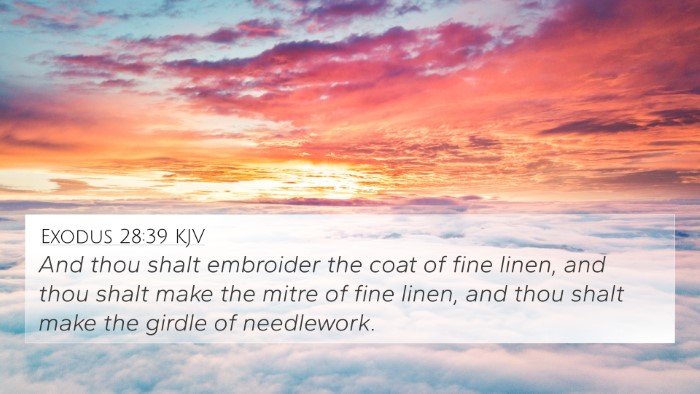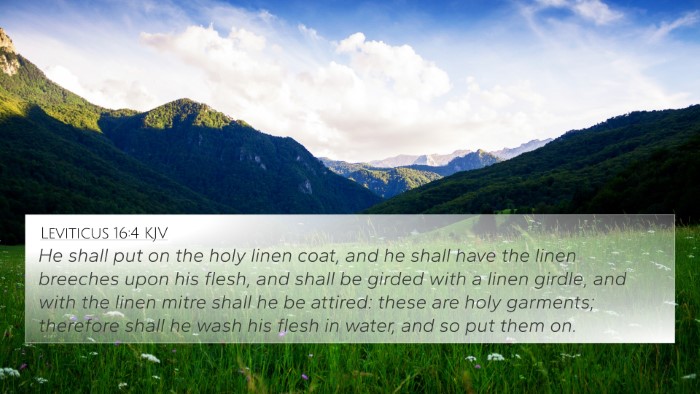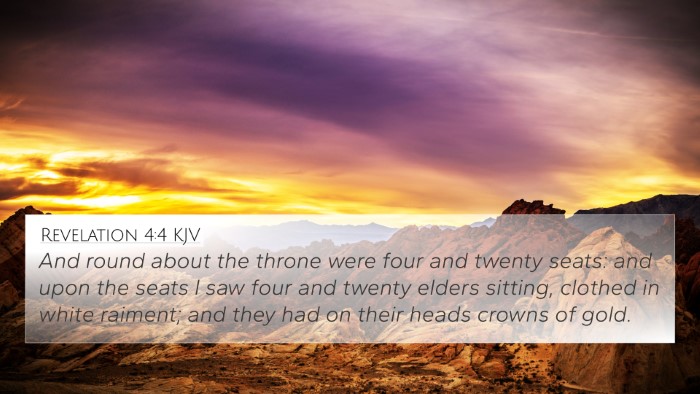Ezekiel 44:17 - Summary and Interpretation
Bible Verse: Ezekiel 44:17 - "And it shall come to pass, that when they enter in at the gates of the inner court, they shall be clothed with linen garments; and no wool shall come upon them, whiles they minister in the gates of the inner court, and within."
Meaning and Insights
This verse is a part of Ezekiel's vision concerning the future temple in Jerusalem and the regulation of the priests' conduct. Below, we summarize the insights drawn from various public domain commentaries, along with their thematic Bible verse connections.
Commentary Insights
Matthew Henry's Commentary
Matthew Henry emphasizes the holiness required of the priests. The allusion to linen garments symbolizes purity, signifying that those ministering in the temple must be spiritually cleansed, free from the burdens that wool represents. This focus on garments represents an essential aspect of divine worship.
Albert Barnes' Notes
Barnes draws attention to the significance of linen versus woolen garments. He indicates that linen, being lighter and more suitable for divine service, reflects a state of readiness and purity demanded by God. The absence of wool, which can signify worldly burdens, highlights the need to approach God with a heart untainted by the cares of life.
Adam Clarke's Commentary
Clarke notes that these regulations served to distinguish the priests and maintain a clear line of separation from worldly ties. He points out that their attire is not only a matter of physical clothing but serves as a deeper reflection of their spiritual responsibilities as God’s representatives.
Thematic Connections
- Holiness of the Priesthood: This verse connects to Leviticus 10:6-7, where the priests are commanded to distinguish themselves through their conduct.
- Purity and Participation: The call to wear linen echoes the requirements in Exodus 28:42-43, regarding the attire of priests during their duties.
- Separation from Worldliness: This idea is reinforced in 2 Corinthians 6:17, where believers are urged to separate from unclean things.
- Spiritual Readiness: Reflecting on the need for spiritual alertness in 1 Peter 2:9, where believers are called a holy priesthood.
- Approaching God: The connection to Hebrews 10:22 emphasizes the need for a pure heart in drawing near to God.
- Divine Service: This is linked to Psalm 100:2, which describes serving the Lord with gladness.
- The Nature of True Worship: This theme resonates in John 4:24, where true worshipers must worship in spirit and truth.
- Consistency in Ministry: Reflects the call for faithfulness found in 1 Corinthians 4:2, where stewards must be found faithful.
- Symbolism of Garments: This concept is further examined in Isaiah 61:10, where God’s people are clothed in garments of salvation.
- Persevering in Duty: Echoes Colossians 3:23-24, emphasizing that whatever we do, we must do it heartily, as for the Lord.
Cross-Referencing Insights
The practice of cross-referencing enhances our understanding of the significance of Ezekiel 44:17. It forms connections between Biblical texts, leading to a more cohesive interpretation of God’s standards for worship.
There are tools for Bible cross-referencing which include various Bible concordances and guides that can significantly aid in cross-reference Bible study. Incorporating methods for cross-referencing can unveil thematic connections among scriptures, offering deeper insights into God’s overarching message. To explore detailed cross-references, people often ask:
- What verses are related to Ezekiel 44:17?
- How do Ezekiel 44:17 and Leviticus 10:6 connect?
- Similarities between Ezekiel 44:17 and Hebrews 10:22.
- Bible verses that support the ideas in Ezekiel 44:17.
Conclusion
In summary, Ezekiel 44:17 serves a critical role in instructing the priests on sacred attire and conduct, symbolizing the necessity of purity and separation from worldly distractions. Through careful consideration of cross-referenced scriptures, we can gain a fuller understanding of God's expectations for worship and the spiritual implications for believers both in the Old Testament context and today.
